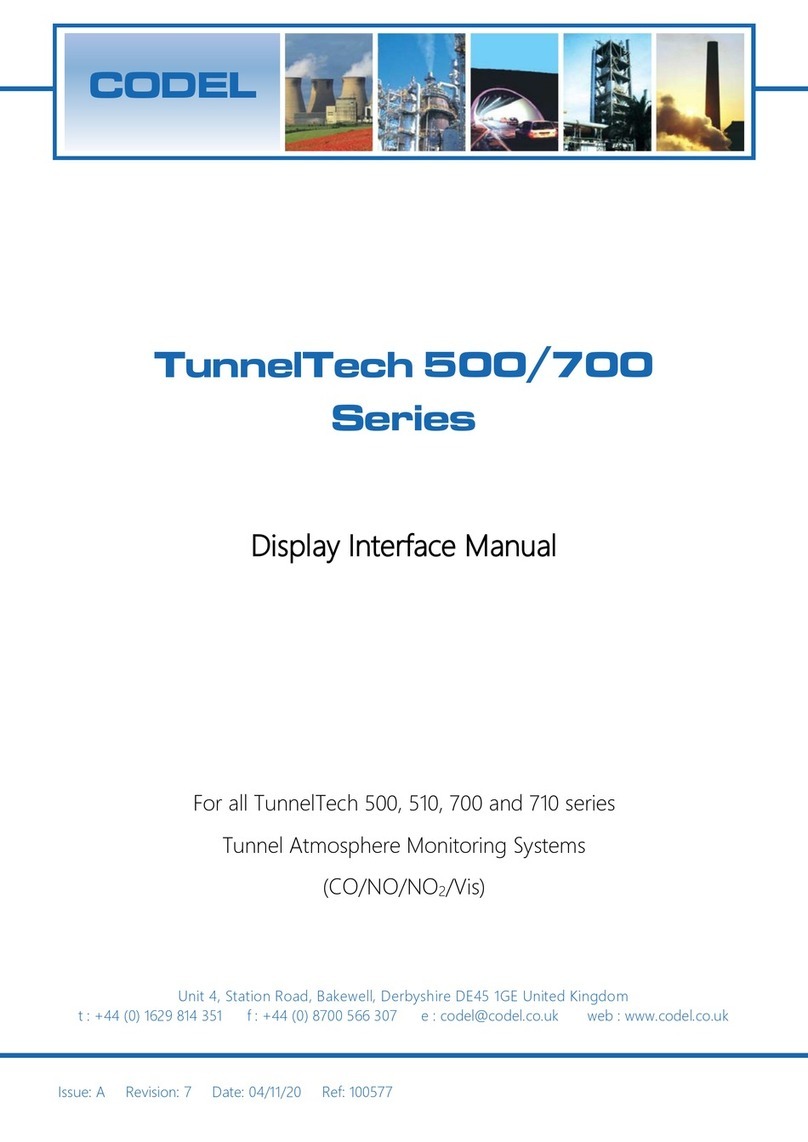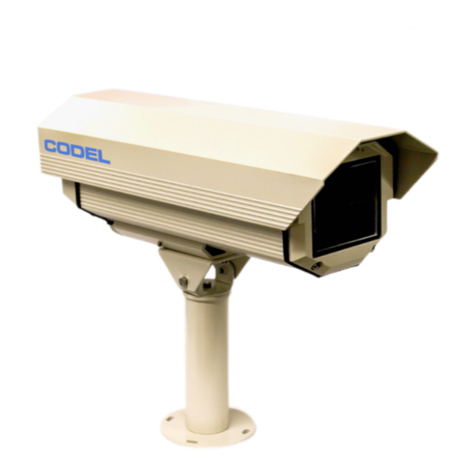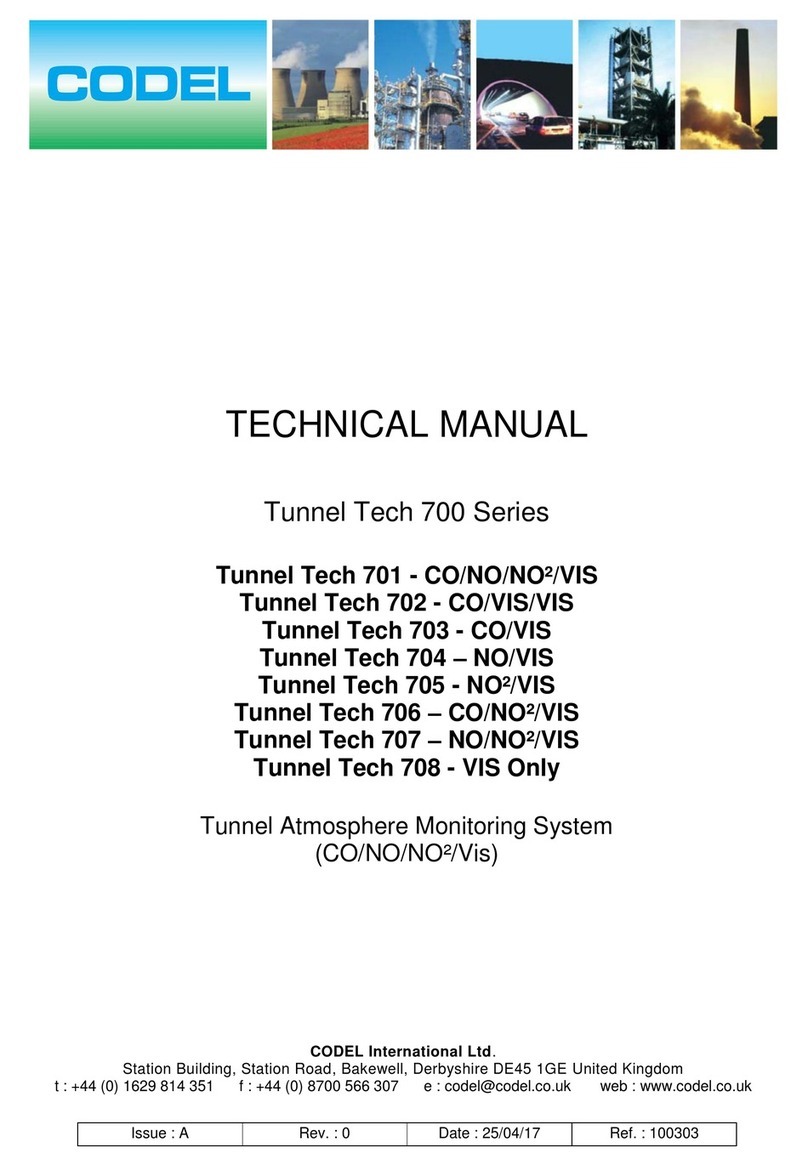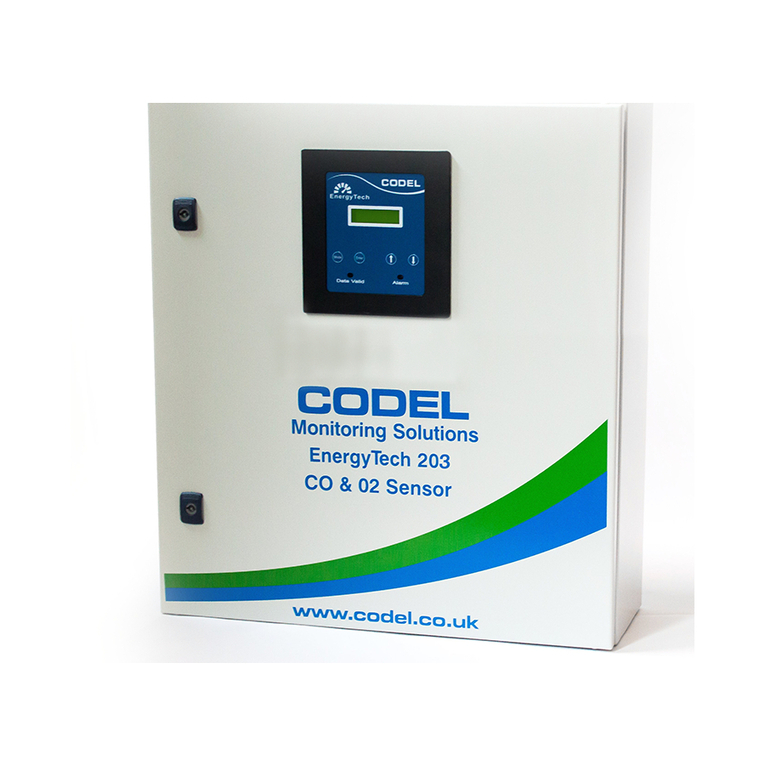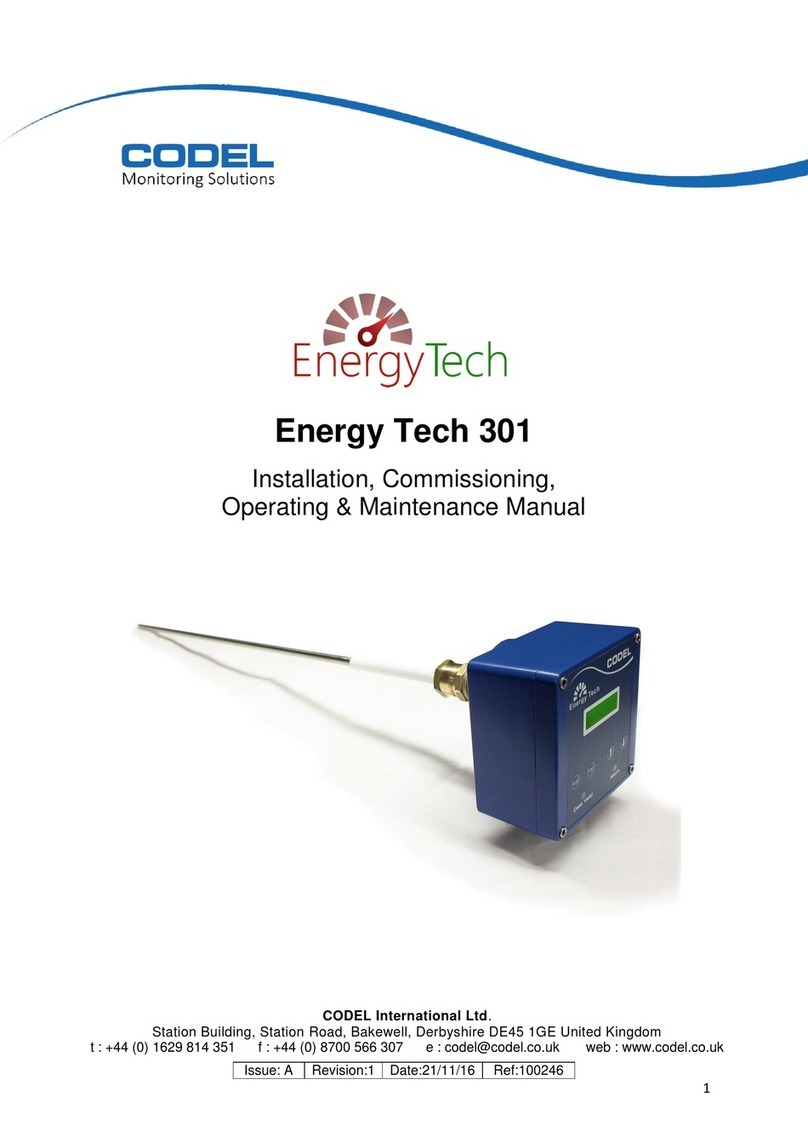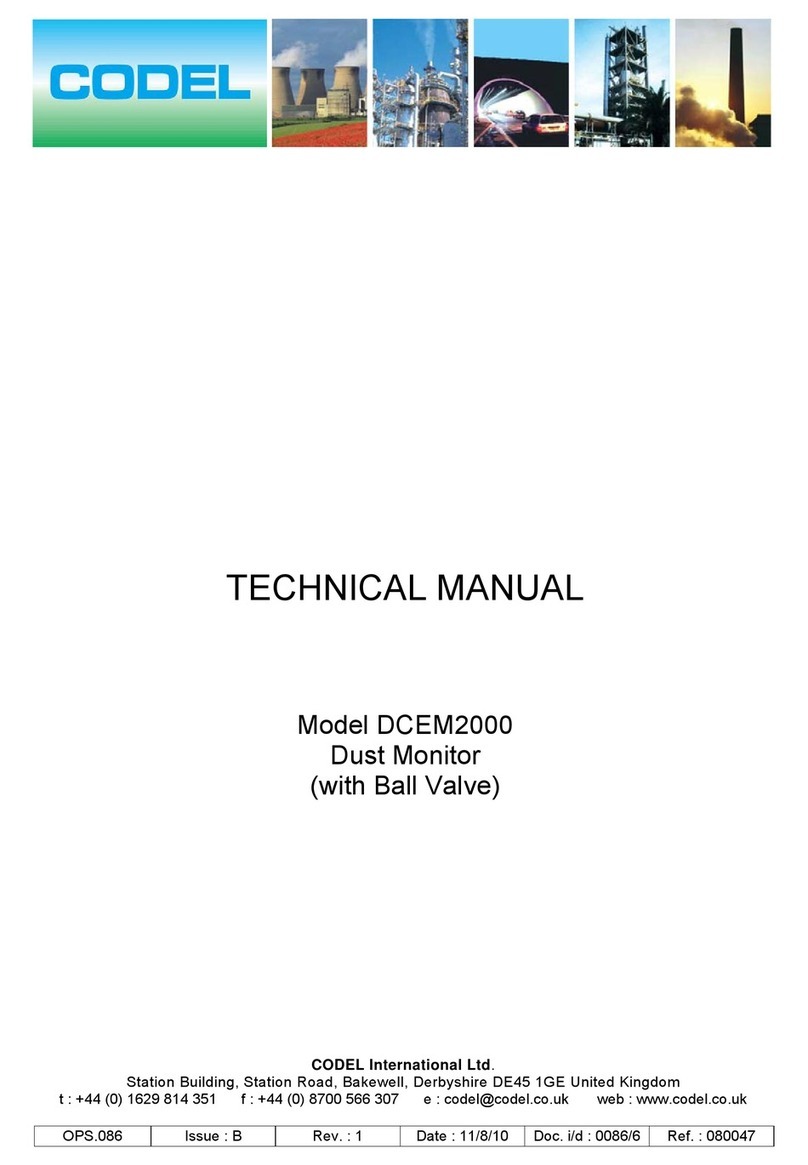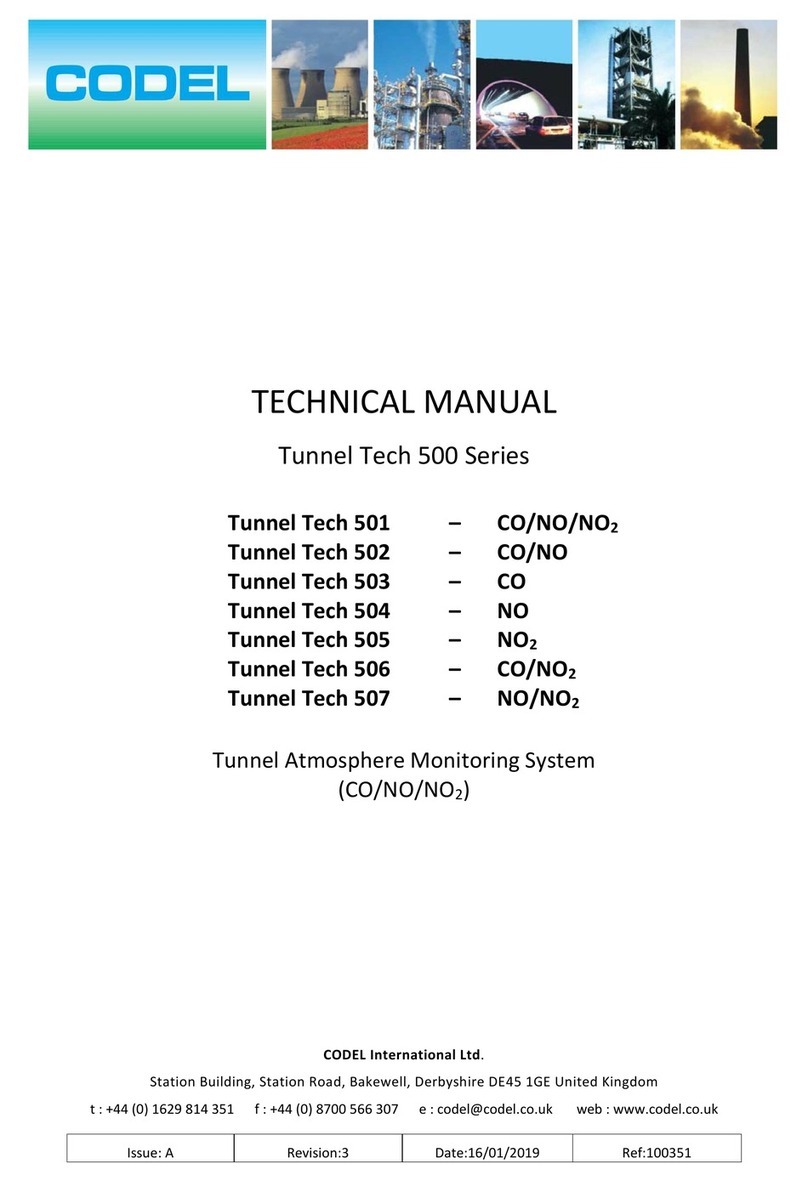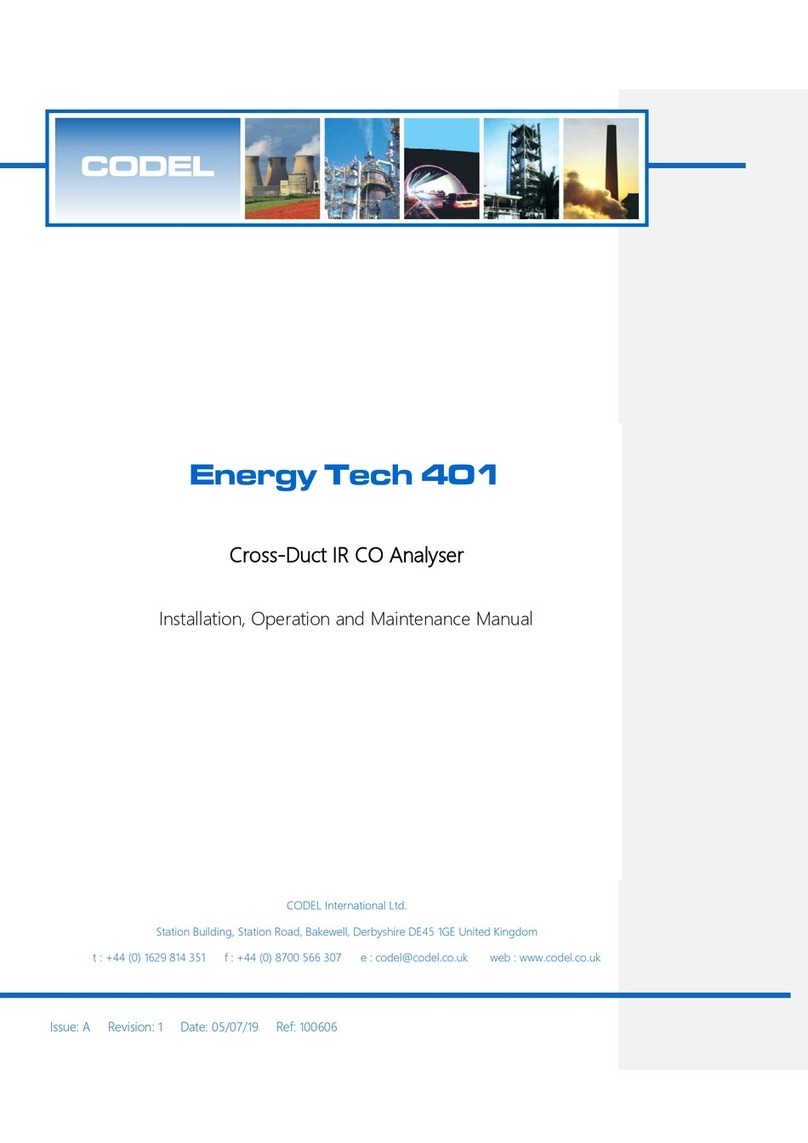
Technical Manual Page 3 CODEL
OPS.080 Issue : C Rev. : Date : 16/7/08 Doc. i/d : 0080/6 Ref. : 080040
1.3. Emission Monitoring and the GCEM4000
Although GCEM4000 analysers can be used for process gas analysis, they have been primarily designed to
monitor pollutant emissions from industrial stacks. Legislation governing such emissions usually requires data to
be reported in very specific formats. GCEM4000 analysers are therefore designed to fulfil this requirement
without the need for external data manipulation. Although differing in detail from country to country, the essential
demands of legislation are common world-wide.
1.3.1. Normalisation
Emission limits are always defined under standard conditions of temperature, pressure and air dilution (air
dilution is defined using the waste gas CO2or O2concentration). Most legislation also requires concentrations to
be reported on a dry basis; i.e. water vapour in the flue gas is not permitted to dilute the measurement. The
correction of the measurement from ‘as measured conditions’ to ‘standard’ conditions is known as
‘normalisation’. Like all in-situ analysers, GCEM4000 analysers measure concentrations of pollutant ppm
(parts per million by volume) or %, under the conditions at the measurement position.
This basic ppm measurement is always corrected for the duct pressure and presented as vpm by the analyser.
GCEM4000 analysers have the capability for the outputs and display to be configured in vpm (or %) or mg/m3
(which is a mathematical conversion depending on the molecular weight of the gas being measured and the flue
gas temperature), or in mg/Nm3(i.e. ’normalised’ to the required standard conditions).
When the outputs are required to be normalised to a pre-defined O2concentration as opposed to a CO2level,
then an external O24-20mA signal representing Oxygen levels can be input into the GCEM4000. All other
normalising parameters i.e. pressure, temperature, and CO2are measured as standard by the GCEM4000
1.3.2. Verification
It is important that the accuracy of measurement can be verified. Often, legislation requires the regular testing,
reporting and correction of measurement zero and span. GCEM4000 analysers are equipped with automatic
zero verification and correction procedures that allows the measurement cell to be flooded with dry air (or
Nitrogen) to provide a zero check or a certified calibration gas as a span verification.
1.4. User Interface
The analyser is supplied with SmartCOM pc software that enables a pc connected to the SCU to display of all
real-time measurements as well as the setting up and display of all the analysers’ configurable operating
parameters. This interface includes a diagnostic mode that allows interrogation of the condition of the analysers’
critical functions for service and trouble-shooting purposes. A full description is provided in Section 5.
1.5. Analogue and Logic Inputs and Outputs
The GCEM4000 SCU is equipped with an analogue output (0/4-20mA) for each measurement channel (up to
seven). Each output is freely configurable for any span (within the limits for that measurement, as given in
Section 2. Summary Specification and measurement units (vpm or %, mg/m3, mg/Nm3).
Volt-free contact outputs (250V/10A) are provided for data valid and measurement alarm level (common output
for all measurement channel alarms).
Three 4-20mA inputs are provided for normalisation measurements (273Ωinput impedance, ±200V DC
common mode voltage range). These inputs are also able to provide isolated 24V DC supplies to drive
either 2 or 3-wire external normalisation measurement transducers.
